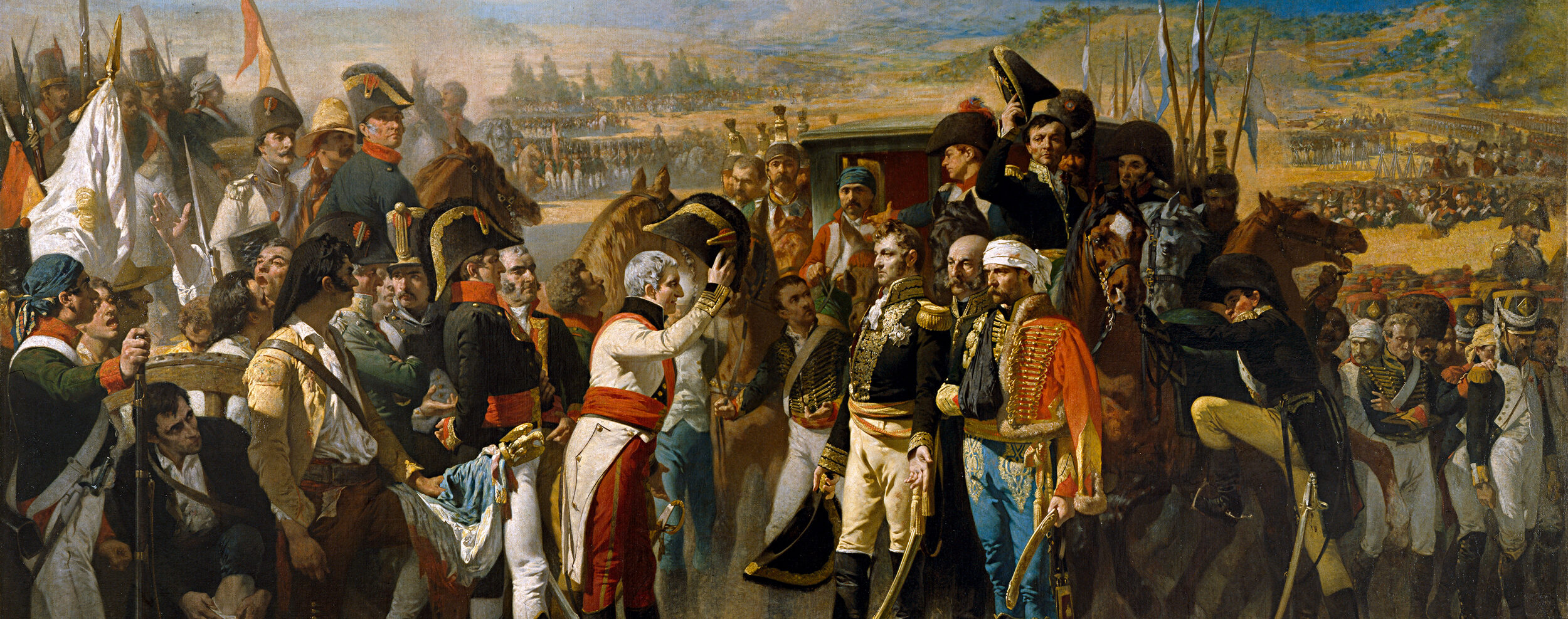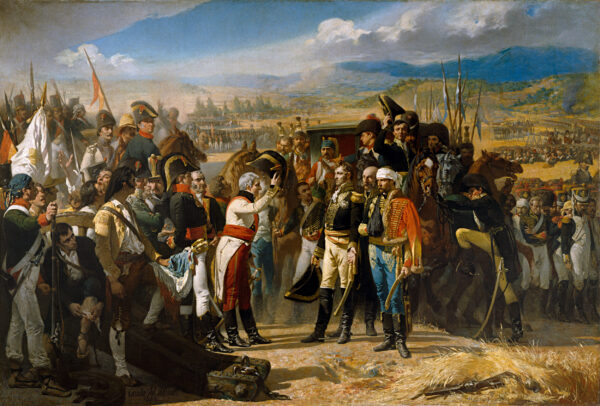Source:Fundación Disenso
On 19 July the Battle of Bailén took place, in which the Spanish army of Teodoro Reding and Castaños defeated the invading French army
One of the most famous depictions of the events that mark the history of the Peninsula War (1808-1814) was created by José Casado del Alisal in 1864. Painted in oil on canvas measuring 338 x 500 cm, it was exhibited for the first time at the Teatro Real, and was such a success that Queen Isabel II herself acquired it and awarded its creator the honours of court painter. It was also awarded a First Class Medal at the National Exhibition of December 1864. King Alfonso XIII donated it to the Museum of Modern Art in 1921, located on the upper floor of the National Library, until its final transfer to the Prado Museum.
The work reminds Spaniards of a very important military victory, the one that took place on the fields of Bailén between 18 and 20 July 1808, when, for the first time in a long time, the French armies – undefeated in European wars – were defeated by the forces they despised. Such was their disdain for the possible resistance or effectiveness of Spanish arms that Napoleon did not deign to show up in Spain, showing more concern for the Austrian, Russian or Prussian armies than for the Spanish. The fact that Napoleon’s soldiers – so admired throughout 19th-century Europe – surrendered to the Spanish was worth remembering.
Dividing the painting, on the right are the French officers in a gesture of submission, and on the left are the Spaniards. In the latter group, the figure of General Castaños, in white uniform, can be seen chivalrously saluting the defeated; behind him, General Teodoro Reding, more serious and proud; in between them, Manuel de la Peña, in charge of the reserve forces, and Lieutenant General Félix Jones. The group of French officers is made up of General Dupont, in a haughty attitude but with his arms outstretched in surrender, Jacques Nicolas Gobert and the engineer Marescot. The Spanish group behind their officers is made up of soldiers in various uniforms and civilians, one of whom is carrying a French flag with the imperial eagle shining on the pole. This is a symbol of the military defeat of the invaders and a reminder of the popular participation in the general uprising of the same year.
Behind the group of Napoleonic officers are the carriage that took them there, their staff and the escort of dragoons. And, further to the right, parade the troops considered invincible, the new Immortals – in memory of the mythical unit of the Persian Empire – with their faces full of shame and embarrassment at their defeat by the Spaniards. The parade did indeed take place, next to the Rumblar inn, in front of the divisions of La Peña and Jones.
However, the painter took certain historical liberties. In fact, neither Reding, Coupigny nor Gobert, who had been killed in the battle of Mengíbar a few days earlier, were present at the surrender ceremony on the 23rd – which should not be confused with the capitulation that took place the previous day in a post house. Casado del Alisal’s intention was not to submit to the strict reality of the events but to make room for compositional elements that – based on tradition – could give the painting greater spectacularity and impact. Moreover, the figure of the wounded Gobert in his hussar’s uniform made a great impression and was highlighted by the critics.
Naturally, when standing in front of the painting, the viewer could not then – nor now – fail to think of the influence of another superb canvas, The Surrender of Breda (1635) by the immortal Diego Velázquez. It is particularly noticeable in the arrangement of the antagonistic armies concentrated on the right and left in an outdoor setting, in the placement of the military leaders in the compositional centre and in the gallant gesture of victory with nobility and nobility of General Castaños in the face of French arrogance. It was not mere imitation that Casado del Alisal developed, but a certain understanding or assimilation of the essence of Las Lanzas, as that popular representation of the Spanish victory was also called. The theatrical air of both compositions was equally emphasised by critics, but it should be borne in mind, firstly, that Velázquez’s canvas was influenced by the ending of the play of the same title written by Calderón de la Barca and performed in 17th-century playhouses. As for the theatricality of the composition of The Surrender of Bailén, it was influenced by the stagings of historical and romantic dramas staged in the 19th century. And we should not forget the precedent, very close in time, of Goya’s canvases El Dos de Mayo and Los fusilamientos del Tres de Mayo en La Moncloa (1814), which attempted to perpetuate – in the words of the Aragonese painter – “the most notable and heroic actions… of our glorious insurrection against the tyrant of Europe”.
Miguel de Unamuno expressed his opinion of this type of painting: “Horrendous and dishonourable school that we might call historical or rather scenographic, that of the dishonourable history paintings”. He did not understand that this type of painting was part of a cultural project for the creation of the liberal state in 19th-century Spain. Events that formed part of the nation’s past were to be put on canvas – as an artistic symbol of their relevance – and also shown to the public at the National Exhibitions and later disseminated to the general public by means of plates in books or prints. This trend was not only Spanish but European and helped to form a range of historical images that helped European citizens to remember the most singular events that had marked their history up to that time. In this sense, history painting responded to the need to affirm a national identity, which needed positive references since the criticism of contemporary intellectuals – up to the present day – has so often been devastating and self-destructive.
Share this article
On This Day
- 1648 Pedro II of Portugal is born.
History of Spain
26 August 2020
27 January 2021
Communism: Now and Then
23 December 2022
28 July 2021







